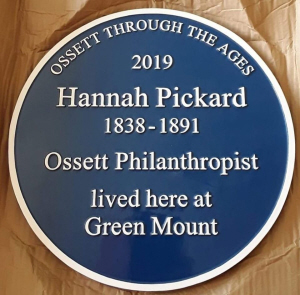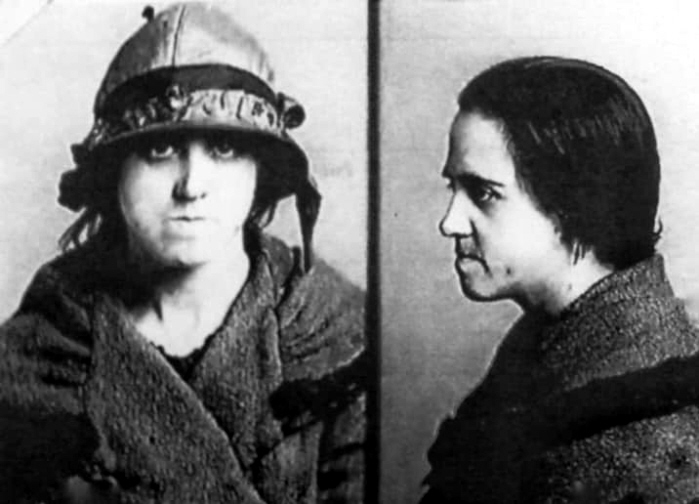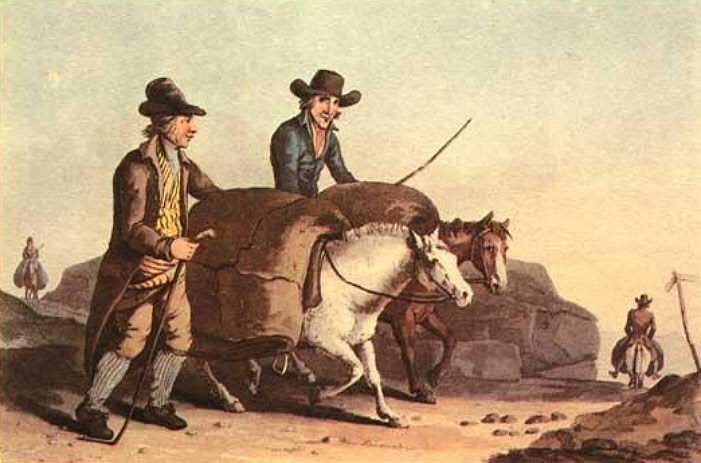Reginald Earnshaw
 Reginald (Reggie) was born on 5th February 1927.
Reginald (Reggie) was born on 5th February 1927.
For 4 years he lived at the “Millers Arms” at Healey. From just after his birth to just before his 5th birthday.
When he was 14, the country was at war. Young boys around the country wanted to help fight in the war. They talked of seeking excitement and adventure. Although war was rarely like that.
Reggie wanted to sign up for the Merchant Navy. But he was too young. So he lied. And was accepted.
Reggie served as a cabin boy for a few months on a ship called "North Devon". On the 5th July 1941, Reggie was on board when four bombs were dropped by German bombers. None had a direct hit, but one exploded fracturing the ships main steam line. This resulted in Reggie being scalded to death by the steam.
14 years old. Seeking adventure. Wanting to fight for his country. And he never came home.

On the 28th September 2019, a blue plaque was placed upon the wall of his previous home in Healey at Ossett. It shows his name and ensures we will not forget the bravery of the youngest person to die in service.
Rachel Driver, April 2020
Hannah Pickard
 Hannah was born in 1838. Her Dad died when she was just 2 years old. Life was very much harder then and people died of things that are easily treatable today. All her family died young.
Hannah was born in 1838. Her Dad died when she was just 2 years old. Life was very much harder then and people died of things that are easily treatable today. All her family died young.
Hannah never married. Instead she looked after her home and family whilst her brothers worked hard. They lived at Green Mount on The Green, in Ossett.
When Hannah died in 1891 at 52 years of age, she was a wealthy woman thanks to the money left to her by her brothers who sadly died before her. They had made a lot of money as mill owners.
She left over 4 million pounds to good causes (that’s equivalent to today’s money).
These included friends and family. But more importantly to Churches, Hospitals, Education, Lifeboats and Animal Charities.
In her will she asked for a water fountain to be erected in the Town centre to commemorate Ossett becoming a borough. It cost £500.
It was removed from the town centre to Green Park. Parts of it were sold. There is now just the broken central part left. It’s being kept safely and plans are being made to bring this part back into the town. Watch this space.

Hannah was buried with other deceased family members nearby, in a graveyard in Ossett. When this land was sold in 1973 she was dug up, in the middle of the night, with 160 other bodies, loaded onto a flat bed truck and dumped in an open grave in Gawthorpe, with all the other bodies. No Priest was present. Not a very respectful way to treat a lady who gave so much to our town.
When this information was discovered, a team of people decided to make sure this lady was remembered. Her name appeared to have been erased from history.
On the 9th November 2019, a blue plaque was installed on her former home. She is now remembered.
Rachel Driver, April 2020
Louie Calvert (née Gomersall)
Louie Gomersall was born in 1895 and lived in Gawthorpe. By 17 years of age she had already served a year in Borstal. She was a thief and a liar. That never changed. She was small in height but described as intimidating.

She left Ossett to be a housekeeper in Leeds for a man by the name of John Frobisher. He was found dead in suspicious circumstances, floating dead in the Leeds/Liverpool canal.
We will come back to this.
She later married Arty Calvert and announced she was pregnant with his child. She told him she was coming back to Ossett to have her child. It was a lie. She wasn’t pregnant.
She moved in with her friend Lily Waterhouse. Lily had a friend called Fred Crabtree. One night in March 1926, all three of them argued. Fred attacked Lily, Louie defended Lily and picked up a poker to hit Fred with. But, she missed, and hit Lily instead. She fled back to Arty’s house.
Police discovered Lily’s body after neighbours complained about the noise of the argument. She had been strangled. By Lily? Or by Fred? She denied it. It’s likely that it was Fred.

She was found guilty. She was hanged at Strangeways Prison and buried in an unmarked grave. She said she was innocent right until the end. Innocent of the murder of Lily.
However, she did confess to the murder of John Frobisher.......
Rachel Driver, April 2020
Eli Townend
 Eli Townend was born in 1846. He was born with a sight impediment. This prevented him from ever being able to read or write.
Eli Townend was born in 1846. He was born with a sight impediment. This prevented him from ever being able to read or write.
His parents were poor. His father was a hand loom weaver but could not afford to send him to school. At this time, school wasn’t compulsory and it cost a penny a day for children to attend school.
So, he had a bad start and knew he would have to work incredibly hard to achieve. But work hard he did.
Although he couldn’t read or write, he listened. A lot. This served him well.
He did many jobs. Even selling hot peas in the Market Place!
At 15 years old, he turned the printing press for the first edition of the Ossett Observer in 1864.
Some 26 years later he laid the foundation stone for the Borough Printing Works. But he made his money working in mills. He worked at Healey Old Mill and Victoria Mill.
He was a good employer, treated his staff fairly and paid a good wage. But he never forgot his roots or his bad start. He regularly looked after the poor. At Christmas he gave away blankets and coals to keep the poor warm.

He lived at Calder Villa on Healey Road. It’s still standing today. He died in 1910, aged 65. At that time, in today’s money, he was worth over 4 million pounds.
Not bad for a man who couldn’t read or write. But what he could do was listen. Remember that bit.
Rachel Driver, April 2020
Richard Wilson
Back in the 1730s many people in Ossett were employed as hand loom weavers or clothiers as they were known.

Using primitive hand looms, the clothiers made long pieces of woollen cloth, each about 22 metres long and 1.6 metres wide, which were called Northern broadcloths.
A horn was blown at 5am every morning to signal them to start work and it wasn’t blown again until 8pm to signal the end of their working day. They worked 15 hours a day and were paid less than 5p for all that hard work.
Once the cloth was made, it had to be sold and the market for Ossett's clothiers was the Leeds Cloth Market on Briggate. The markets were held on Tuesdays and Saturdays and were attended by clothiers from the Batley, Dewsbury and Ossett districts. Some rode there on pack horses, but most went on foot. Some carried the cloth on their shoulders, while others used cloth barrows.

In 1736, Ossett clothier Richard Wilson made two pieces of broadcloth and carried one on his head to the Leeds cloth market, where he sold it. The merchant wanted to buy the other piece, so Wilson walked back to Ossett, then carried the second piece of cloth back to Leeds before walking back home to Ossett again - a distance of about 40 miles in one day.
The average height of a man in the 1730s was 5ft 4” or 1.62m. These broadcloths weighed 30kg at least and carrying one, on your shoulder or head, the ten miles to Leeds from Ossett must have been physically demanding.
Richard Wilson was my Ossett ancestor.
Ossett’s last hand loom weaver, a man called Nettleton, was still working as late as 1903 at the age of 90 years and only stopped because he died.
